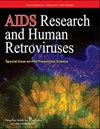比较四种预测墨西哥艾滋病病毒感染者心血管风险的评分方法。
IF 1.5
4区 医学
Q4 IMMUNOLOGY
引用次数: 0
摘要
由于免疫激活、合并症和某些抗逆转录病毒药物,艾滋病病毒感染者(PWH)发生心血管事件的风险增加。然而,目前的心血管风险(CVR)评分并非专门针对艾滋病感染者。本研究旨在评估不同预测性 CVR 评分之间的一致性,并探讨它们与墨西哥 PWH 的临床和人口统计学数据之间的关系。研究对 2017 年至 2018 年期间在墨西哥城市中心接受治疗的 200 名 PWH 进行了描述性横断面分析,他们的平均年龄为 42 岁。大多数人(83%)正在接受抗逆转录病毒治疗,79.5%的人病毒载量检测不到。中度至高度风险评分并不常见,而弗雷明汉硬性冠心病风险评分(FRS-HCHD)的评分值较高,所有评分之间的一致性很低。逻辑回归分析显示,CVR 评分与最初记录的病毒载量、CD4 细胞计数和甘油三酯水平升高之间存在明显关联。但是,与体重指数或腹围等指标没有关联。整合酶抑制剂(INSTIs)的治疗,尤其是第一代抑制剂的治疗,与所有预测评分都有很强的相关性,尤其是ASCVD(OR=7.03,95% CI 1.67-29.64)。PWH人群CVR评分的一致性较差,这突出表明需要一个考虑到合并症和抗逆转录病毒药物的特定评分。尽管参与者的年龄相对较小,但仍观察到 INSTI 的使用、初始病毒载量、CD4 细胞计数和甘油三酯水平之间存在显著的相关性,而现有的风险评分并未考虑这些因素。无论评分的实际价值如何,都建议对 PWH 进行 CVR 筛查。本文章由计算机程序翻译,如有差异,请以英文原文为准。
Comparison of four predictive scores for cardiovascular risk in Mexican people living with HIV.
Persons with HIV (PWH) face an increased risk of cardiovascular events due to immune activation, comorbidities, and certain antiretrovirals. However, the current cardiovascular risk (CVR) scores are not specifically directed toward PWH. This study aimed to assess the agreement between different predictive CVR scores and explore their relationship with clinical and demographic data in Mexican PWH. A descriptive cross-sectional analysis was conducted in 200 PWH with a mean age of 42 years who were treated at a Mexican urban center from 2017 to 2018. The majority (83%) were on antiretroviral treatment and 79.5% had undetectable viral loads. Moderate-to-high risk scores were infrequent, with Framingham Risk Score for Hard Coronary Heart Disease (FRS-HCHD) scores showing higher values, with very low concordance among all scores. Logistic regression analysis revealed significant associations between the CVR scores and the initial recorded viral load, CD4 cell count, and elevated triglyceride levels. However, no associations were found with measures such as body mass index or abdominal circumference. Treatment with integrase inhibitors (INSTIs), particularly first-generation inhibitors, showed strong associations with all predictive scores, notably ASCVD (OR=7.03, 95% CI 1.67-29.64). The poor concordance among the CVR scores in PWH highlights the need for a specific score that considers comorbidities and ARV drugs. Despite the relatively young age of the participants, significant correlations were observed between INSTI use, initial viral load, CD4 cell count, and triglyceride levels, which are factors not considered in the existing risk scores. Regardless of the actual value of the scores, screening for CVR in PWH is recommended.
求助全文
通过发布文献求助,成功后即可免费获取论文全文。
去求助
来源期刊
CiteScore
3.10
自引率
6.70%
发文量
201
审稿时长
3-6 weeks
期刊介绍:
AIDS Research and Human Retroviruses was the very first AIDS publication in the field over 30 years ago, and today it is still the critical resource advancing research in retroviruses, including AIDS. The Journal provides the broadest coverage from molecular biology to clinical studies and outcomes research, focusing on developments in prevention science, novel therapeutics, and immune-restorative approaches. Cutting-edge papers on the latest progress and research advances through clinical trials and examination of targeted antiretroviral agents lead to improvements in translational medicine for optimal treatment outcomes.
AIDS Research and Human Retroviruses coverage includes:
HIV cure research
HIV prevention science
- Vaccine research
- Systemic and Topical PreP
Molecular and cell biology of HIV and SIV
Developments in HIV pathogenesis and comorbidities
Molecular biology, immunology, and epidemiology of HTLV
Pharmacology of HIV therapy
Social and behavioral science
Rapid publication of emerging sequence information.

 求助内容:
求助内容: 应助结果提醒方式:
应助结果提醒方式:


